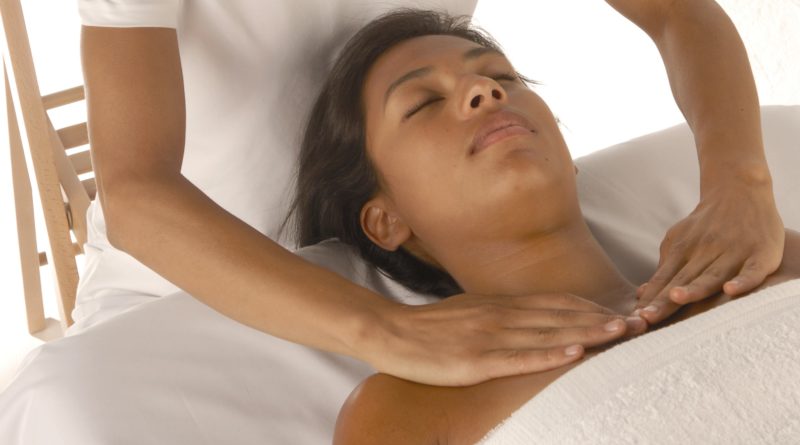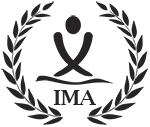The benefits of Professional Therapeutic Massage
Professional therapeutic massage is, in many cases, an extremely effective way to treat various conditions of the musculoskeletal system. This includes different types of overuse injuries in muscle and connective tissue, as well as tendons, muscle fascia, and ligaments caused by, for example, trauma, repetitive static work such as working in front of a computer, improper/heavy lifting, or sports injuries.
Studies have also shown that massage is the most effective treatment for myogenic headaches (muscle-induced headaches), commonly referred to as tension headaches.
Therapeutic massage does in this context mean: The treatment of disorders of the musculoskeletal system.
Therapeutic massage refers to the treatment of disorders of the musculoskeletal system through various mechanical principles, including massage, stretching techniques, and the use of cold and heat treatments.

Therapeutic Massage Has a Wide Range of Effects
But what exactly makes professional therapeutic massage so effective? In general, massage has numerous positive effects that can provide both physical and mental well-being. While wellness massage, hot stone massage, and other holistic forms of massage primarily offer relaxation, professional therapeutic massage is a highly targeted physical therapy.
Therapeutic massage is developed based on the body’s anatomical structures, such as bones, muscles, tendons, and ligaments.
This form of massage is, therefore, a medically accurate Western method of massage. Beyond promoting well-being, professional therapeutic massage is also highly suitable for treating actual conditions affecting the soft tissues of the musculoskeletal system.
My own experience, with over two decades of practice as a therapist, is that therapeutic massage, when performed by a well-trained massage therapist, is superior to many other treatment methods. This is supported by a nationwide survey where Danish clients predominantly choose therapeutic massage as their preferred form of massage.
There are many reasons for this, not least that with just the fingers and hands, a therapist can feel the “immediate condition” of the tissues.
Additionally, an experienced therapeutic therapist can detect changes in the tissues from one session to the next and thus adjust both the treatment, advice, and guidance accordingly. When done correctly, therapeutic massage has a wide range of preventive and restorative effects of mechanical, biological, and physiological nature, including the following:
Warming Effect
Massage generates a warming effect, achieved, for example, through the friction that occurs when hands and fingers rub against the skin and by the shifting of individual tissue layers against each other. Additionally, the pumping effect of individual techniques helps open the small blood vessels—capillaries—of the muscles. Besides these purely mechanical effects, the treatment also has a biochemical effect, as the body releases certain intracellular enzymes like histamine. Histamine affects the arterioles, causing local blood vessel dilation.
Effect:
The warmth will provide a general relaxation of the entire body, particularly in the treated area. Furthermore, the warmth will contribute to increased blood circulation in the treated area, which is vital since blood transports healing nutrients and removes waste products, making this effect very effective.
Pumping Effect
In the professional massage technique, pressure is developed in the damaged area, creating overpressure in front of the stroke and underpressure behind it.
The overpressure helps accelerate the recovery of damaged or fatigued tissue by speeding up the removal of waste products and promoting a quicker and increased supply of fresh, oxygenated, and nutrient-rich blood.
Increased Tissue Permeability
Through deep, specific massage, localized pressure increases, opening the pores in the cell walls.
The increased tissue permeability enhances the elimination of waste products, such as lactic acid, and the intake of essential nutrients and oxygen. This is necessary to normalize the metabolism in the tissue and contribute to a faster recovery of damaged and fatigued tissue.
Stretching:
Classic stretching doesn’t affect all muscle fibers. However, massage performed by a professional and skilled therapist can specifically stretch individual groups of muscle fibers, especially in areas with overloaded structures such as myofascial trigger points, connective tissue, and tendons. Additionally, massage is entirely independent of the joint’s mobility and can therefore effectively stretch muscles attached to joints with limited movement.
The specific stretching effect of massage is unparalleled and can therefore help treat small and almost inaccessible areas with tense and strained structures effectively.
Loosening of Connective Tissue
An effective deep cross-fiber massage can break down early scar tissue formation and separate adhered structures caused by protein substances or clotted blood.
Deep cross-fiber massage reduces the risk of scar tissue formation that could impede normal function in parts of the muscle. Breaking down substances that glue muscle fibers and connective tissue together will contribute to a more specific and nuanced muscle function.
Circulation Stimulation
Massage has both mechanical and biochemical effects on circulation, stimulating the autonomic nervous system, which controls the contraction of smooth muscle tissue in blood vessels. This leads to the opening of arterioles and capillaries, increasing blood flow in the treated area.
Effect:
In weak and overstrained muscle and connective tissue, this locally increased circulatory flow can contribute to faster recovery.

Pain Relief
Prolonged unilateral and/or static muscle work due to pain, poor posture, improper technique in sports, and similar factors leads to the contraction and thickening of the elastic parts (connective tissue) in muscle and tendon tissue. Over time, this can cause pain originating from both the soft tissues and the skeletal structures themselves.
Massage stimulates circulation, increasing blood flow and thereby improving oxygen supply to overstrained areas where waste products have accumulated. Additionally, the mechanical impact of massage stimulates mechanoreceptors (sensory nerves) in the tissue, which, through nerve reflexes, leads to the release of the hormone endorphin (the body’s natural painkiller).
Effect:
The increased oxygen supply to overstrained and damaged tissues significantly reduces pain. Moreover, the release of endorphins inhibits the brain’s ability to perceive pain. This leads to a reduction in overall muscle tension, improving blood flow and the supply of oxygen and nutrients.
Hormonal Effect
It is documented that massage raises the level of the hormone and signaling substance oxytocin. Oxytocin promotes relaxation and calm, reduces stress, elevates mood, decreases cortisol levels, lowers heart rate and blood pressure, and even diminishes the sensation of pain. The hormonal effect in the blood and the health-promoting impact on the person receiving the massage continue for a period after the treatment. The effects of massage become more pronounced and last longer after a series of treatments.

A study has shown that massage prompts the body to produce its own pain-relieving medicine. However, the research dismisses the old theory that massage causes lactic acid in the thighs to dissipate.
Massage Limits Inflammation
Massage is a go-to remedy for professional athletes needing to recover quickly and prepare for their next challenge. Or perhaps you’re currently getting your shoulders massaged after a long workweek?
Everyone can agree that massage is blissful, but until recently, there wasn’t scientific proof that it effectively works at the muscle and cellular levels.
A Canadian-American study has now changed that, and we’re pleased to report that you can now lie down on the massage table with an even clearer conscience.
In the study, 10 minutes of massage on thigh muscles after intense physical exercise on a stationary bike triggered notable changes in the muscle tissue of 17 male participants: The massage caused the thigh muscles to produce anti-inflammatory molecules, which could reduce the inflammation that typically occurs after intense training and that leads to characteristic muscle soreness.
Massage Does Not Remove Lactic Acid
In other words, the massage stimulated the body to produce its own pain-relieving medicine, marking progress toward recognizing massage as an effective pain treatment. The new research findings also appear to debunk an old theory.
The massage did not cause the accumulated lactic acid in the participants’ thighs to disappear. Therefore, the idea that massage “sucks out” lactic acid from muscles is not the reason behind its benefits.
- Text by Jeppe Tengbjerg (Founder & CEO International Massage Association)

Did you like the article? Or did you like taking part of the World Championship in Massage or one of our classes, then please feel free to give us a nice review on Google.

At the International Massage Association we are ongoing try to elevate the Massage Profession via our many Articles, Podcasts, Masterclasses and via the Educational Conference at the World Championship in Massage
Please follow the IMA Social Medias and read more articles and watch amazing videos: Facebook, Instagram, Youtube, TikTok, Telegram Channel, Whatsapp Channel, Threads, X, Linkedin




